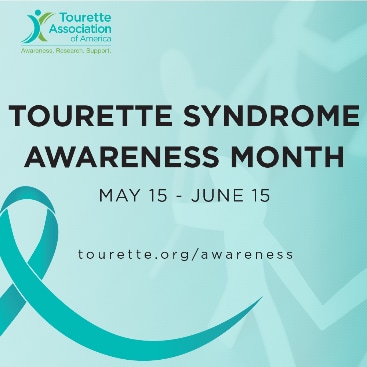Tourette Syndrome: Behavioral Treatment for Tics That Works

A decade ago, a promising behavior therapy option for tic disorders was developed. Learn what CDC is doing to raise awareness and increase access to effective behavioral treatment for Tourette syndrome.
Tourette syndrome is a disorder that affects the nervous system (brain, spinal cord, and nerves) and causes people to have “tics.” Tics are sudden twitches, movements, or sounds that people do repeatedly. For people with Tourette syndrome, tics can happen without them knowing and can be hard to stop or control. Many people with Tourette syndrome also have conditions such as attention deficit/hyperactivity disorder (ADHD) or obsessive-compulsive disorder (OCD).
More Than Medication: An Alternative Treatment Emerges
For many years, medication was the only real treatment option for children and adults with TS. Medication can help control tics, but it doesn’t always work; it can cause side effects that make people feel bad and can lead to other health problems. Researchers working with the Tourette Association of America began developing and testing a promising treatment option1, 2 that does not use medication, called Comprehensive Behavioral Intervention for Tics, or CBIT (pronounced see-bit). The first large study of CBIT in children was published in 2010.1 During the past decade, work to learn more about this treatment, and to make it more widely available, has continued.
About CBIT: Comprehensive Behavioral Intervention for Tics
CBIT is a type of behavioral therapy that teaches a person to become aware of their behavior and helps them change how they behave. It is very systematic and carefully planned, depending on each person’s specific needs and symptoms, and typically takes place in a therapist’s office. During CBIT, the therapist helps individuals with tics learn to
- Become more aware of their tics and the urge to tic;
- Carefully choose and practice a new behavior instead of the tic. This “new behavior” (competing response) helps reduce and, in some cases, even eliminate the tic;
- Identify situations that can make tics worse and find ways to change them; and
- Learn ways to prevent or cope with stress.
CBIT: An Effective Treatment Option for Many People with Tourette Syndrome
“It’s the first therapy I try,” said Dr. Leon Dure, a pediatric neurologist from the University of Alabama at Birmingham. “It has been very effective.”
Linda Rowland, mother of Lucas, 15, who has Tourette Syndrome, shared her experience: “Over 4 years, we tried medication, which was a negative experience, and diets, and neuro-feedback, with no lasting improvement. Two days after Lucas started CBIT the first tic was gone. Now he is basically tic-free for the first time since third grade. If we had CBIT 4 years ago, it would have made the past 4 years so much better. One thing I really like about CBIT is that Lucas is learning how to address tics, so if new ones come up, he’ll be able to manage them on his own.”
When this behavioral treatment was first developed, health professionals were concerned that it could cause more misunderstandings about tics. Just because tics can be managed by changing behavior doesn’t mean that tics are done by choice. Dr. Doug Woods, a clinical psychologist from Texas A&M University and one of the leading experts in CBIT, compared behavior therapy for tics to rehabilitation after a stroke. “If people with Tourette syndrome learn new skills, they can overcome many of the problems caused by their neurological disorder.”
During the past decade, there has been increasing evidence that CBIT can be effective for many people with Tourette. Experts now suggest using it as the first approach to treatment because its effectiveness is similar to medications but with fewer side effects.3 But the evidence also shows that CBIT is not a “cure” for Tourette syndrome and does not help everybody; rather, CBIT is a tool that, when used appropriately, can help many people with Tourette syndrome manage their tics better and reduce the impact that tics may have on their lives. Researchers continue to learn more about how and for whom this treatment is most effective.
Education and Outreach: Increasing Online support and Telehealth
Because CBIT was a new and specific treatment for tics, healthcare providers needed training so that they could offer this treatment. People with Tourette syndrome and their families needed to be informed that it was available and how to find a practitioner who could help them. CDC partnered with the Tourette Association of America to provide CBIT training for health professionals and educational programs about CBIT for people who have Tourette syndrome and their families. In the past decade, the partnership supported 120 CBIT programs with about 3,700 attendees. The Tourette Association of America has also supported 33 training institutes for CBIT, with close to 300 practitioners becoming licensed to provide CBIT to their patients. Read more about CBIT.
With limited options for direct access to training and treatment in the current environment, there is more need than ever to find ways to use telehealth approaches. The Tourette Association of America has worked with experts to identify ways to provide teletraining to professionals who want to learn about CBIT. They also assist professionals who have been trained on CBIT so that they can learn to provide the therapy to their clients via telehealth. In the long term, telehealth can help families who live in rural areas, who have difficulty finding time to visit with a provider, or who have trouble finding a trained provider by giving them options for accessing treatment. Learn more about providing CBIT through telehealth.
The Tourette Association CBIT training is part of the Tourette Health and Education program, a CDC-Tourette Association partnership to provide information, training, and support for those who have Tourette syndrome, their families, healthcare providers, educators, and the general public. Since the start of the partnership in 2004, the Tourette Association of America has conducted more than 1,175 education programs throughout the nation.
More Information
References:
1 Piacentini, J., Woods, D. W., Scahill, L., Wilhelm, S., Peterson, A. L., Chang, S., Ginsburg, G.S., Deckersbach, T., Dziura, J., Levi-Pearl, S., Walkup, J. T. (2010). Behavior therapy for children with Tourette disorder: a randomized controlled trial. JAMA, 303(19), 1929-1937.
2 Wilhelm, S., Peterson, A. L., Piacentini, J., Woods, D. W., Deckersbach, T., Sukhodolsky, D. G., Chang, S., Liu, H., Dziura, J., Walkup, J. T., Scahill, L. (2012). Randomized trial of behavior therapy for adults with Tourette syndrome. Arch Gen Psychiatry, 69(8), 795-803.
3 Pringsheim, T., Holler-Managan, Y., Okun, M. S., Jankovic, J., Piacentini, J., Cavanna, A. E., et al. (2019). Comprehensive systematic review summary: Treatment of tics in people with Tourette syndrome and chronic tic disorders. Neurology, 92(19), 907–915. doi:10.1212/WNL.0000000000007467.https://n.neurology.org/content/92/19/896























.png)











No hay comentarios:
Publicar un comentario